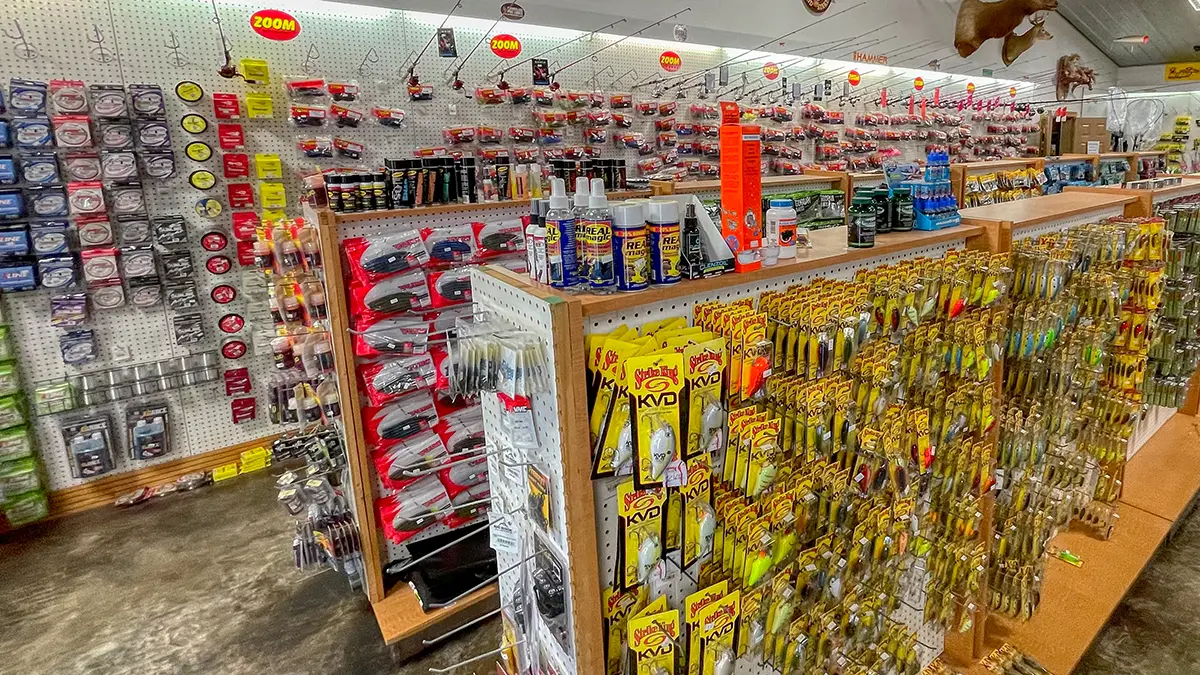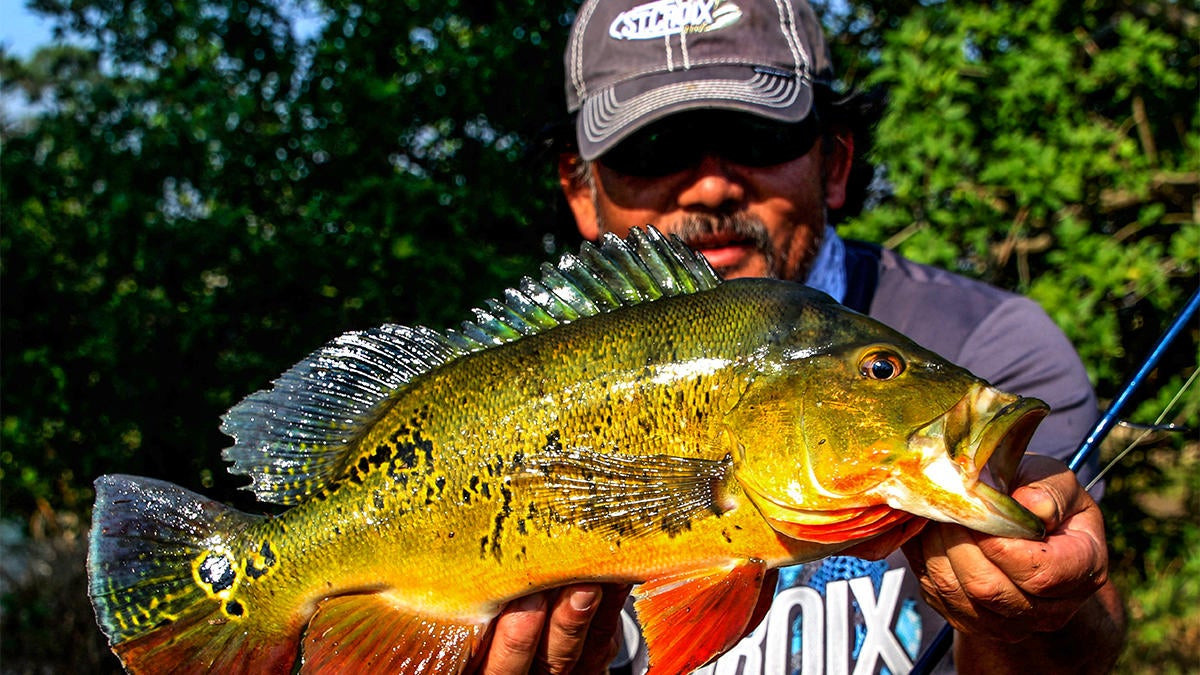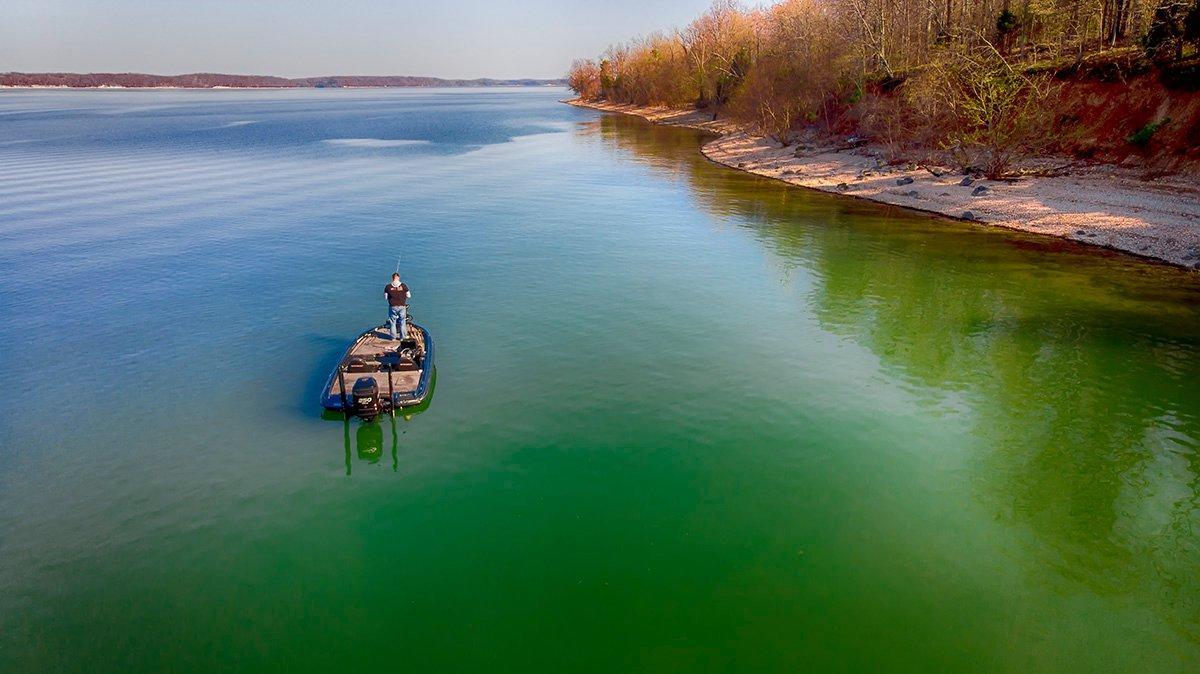Every spring, large river systems in the Northeast are inundated with sea-run striped bass as they head upstream during their spawn. Striped bass or ‘stripers’ are anadromous, spawning in freshwater before returning to saltwater and continuing their journey up the East Coast. For otherwise landlocked anglers, this is a real treat as it gives them the opportunity to tangle with this powerful prized game fish. And knowing how to catch striped bass on live bait is the name of the game if you want to catch the biggest stripers in the system.
While stripers are certainly the focus, they are not the only fish heading into freshwater to spawn. River herring also travel upstream and are generally the first to arrive. Where legal, there is no more efficient way to catch stripers than by using the very bait they are following. However, regulations vary among river systems and its important to check local regulations before hitting the water.

Recommended Striper Fishing Gear
Up and down the East Coast striper anglers are required to use circle hooks, as they allow for an easy release of the fish without harming them, when fishing with bait. This is important to remember when selecting striper fishing tackle. You can find circle hooks at BassPro.com.
Larger spinning reels in the 5000 to 7000 size class posses the line capacity to handle long runs. Some anglers prefer conventional baitcaster reels for the added drag and additional power needed to turn large fish out of ripping current. Reels should be spooled with a high-quality braid, no less than 50-pound. No matter the reel style, bait clickers will alert anglers of a run when multiple lines are in use. Additionally, bait clickers allow a fish to move freely with the bait.
Regarding rod selection, anglers should stick to shorter, medium-heavy models with fast actions. Rods 7 feet or less provide enhanced leverage for big fish in heavy currents. Some companies make rods specifically for striper fishing, for example, the Ugly Stick 7-footer MH for striper.
In order to achieve a proper hookset, extreme patience helps. Once the bait clicker goes off, it’s important the fish is allowed to sustain a run before engaging the reel. Once the gear is engaged, the rod’s fast action comes into play as it ‘loads up’ in the rod holder, perfectly hooking the fish in the corner of the mouth. If the rod is picked up too soon, it can create slack and result in a lost fish.
See more Striper Fishing Tackle at BassPro.com.

Catching Bait for Stripers
The most common method of catching bait is a traditional Sabiki rig, which is nothing more than a series of small, shiny flies on a length of line with a weight clipped to the bottom. The trick is to use enough weight to achieve bottom contact while remaining vertical. After marking a school of bait on the fish finder, it’s relatively common to catch multiple baits with one drop of the rig. While possible to locate these schools in the main river channel, it is easier to find them in the shallows or in current breaks. Note where large schools of bait are present, as stripers will not be far behind.
While a large livewell is necessary to store large quantities of bait, a bucket with river water is enough to keep a few herring alive for sustained periods of time. Often, the action is so steady that while one angler is fighting a fish the others are working hard to secure bait for the next fish.

Best Striped Bass Fishing Rigs
Anglers often drift live bait or anchor and fish off the bottom.
When drifting, the rig is essentially a standard Carolina rig. A barrel swivel connects the main line to a strong fluorocarbon leader, no less than 50 pounds. A barrel sinker sits above the swivel, separated by a bead to protect the knot. The weight size depends on the current levels and depth stripers are marked.
On anchor, anglers often use a “fish finder” rig, utilizing a sinker slider instead of a barrel sinker. The sinker slider allows an angler to drop bait over the side of the boat and open the reel to let it out farther downstream. This is critical as large herring are difficult to cast. A bank or pyramid-style sinker is clipped onto the slider.
A 7/0 circle hook is perfect for most size herring. Tying the leader to the hook with a snell knot is highly suggested as it gives anglers a straight-line pull to the fish resulting in more secure hooksets. To hook the bait, drive the circle hook through a nostril, keeping the baitfish alive and providing plenty of exposed hook gap.

Best Artificial Lures for Striped Bass
Live or chunk herring is undoubtedly the easiest path to a great day on the water. However, artificial tactics can be successful and are a great way to pick up bonus fish as the boat drifts over an active school.
Often in these springtime conditions, water visibility is far from crystal clear. Do not shy away from loud, bold colors. Also, when selecting trailers for jigs, make sure they put off a lot of vibration.
Examples of artificial lures for stripers would include the following:
- Heavy bucktail jigs / paddle tail swimbait trailers
- Flutter spoons (Buy at Bass Pro)
- Jerkbaits (Buy at Bass Pro)
- Large walking topwaters like original Cotton Cordell Pencil Poppers (Buy at Bass Pro)
- Yo-Zuri Striped Bass Hard Lure Kit (Buy at Bass Pro)

Best Locations for River Stripers
Besides the obvious of fishing around the most concentrated schools of bait, bridges, rip-rap banks, and piles of timber all hold fish. However, the most productive areas tend to be shallow flats adjacent too inside turns of the main river channel. The herring will often school up on these flats to get out of heavy current. The stripers will cruise the edges of these flats to feed and then utilize the quick access to deep water for cover.
Begin the day by drifting baits to identify productive locations. Once active fish are located, it is time to anchor up and thoroughly fish the area. Focus on areas with multiple large schools of herring and set up drifts in between them. Begin in the deepest water possible and then move shallower with every pass. If fish are not located after all depths have been covered, it is time to move on.
I am incredibly fortunate to be connected with a talented father and son team of striper fanatics from the Fort Plain, New York area. They are extremely detail oriented anglers and take pride in bringing big fish to the boat.
The first day of our most recent trip, we immediately anchored up on a historically good spot. Within minutes, we were doubled up on fish in the 40-inch class. The action stayed red hot for the remainder of the day, until we were completely worn out and unable to catch bait.
The next morning, we were at it again, and this time there were multiple boats around our productive area from the day before. By staying as tight as possible to the edge of a shallow feeding flat, however, we were able to pick up right where we left off. Boats that were slightly deeper or shallower than us were not having as much success.
All size classes of stripers will be present in these river systems during the spring run. Larger fish, however, will likely stick to specific locations. Effectively patterning these larger fish will be the difference between having a slow day or catching dozens of stripers in the 40 to 50-inch class!

Striped Bass Handling Advice
Many stripers caught in these situations are part of vitally important spawning classes and should be treated with extreme care. Please consider keeping fish in the water throughout the duration of the unhooking and measuring process. If you plan on taking a fish out of the water for a quick picture, fish grippers and an extra hand should be used to help safely control and support the body weight of the fish.
If you love catching big fish and love the all out fight of a big fish in current, than you owe it to yourself to experience striper fishing like this. It’s an incredible fight with absolute trophy fish.

















